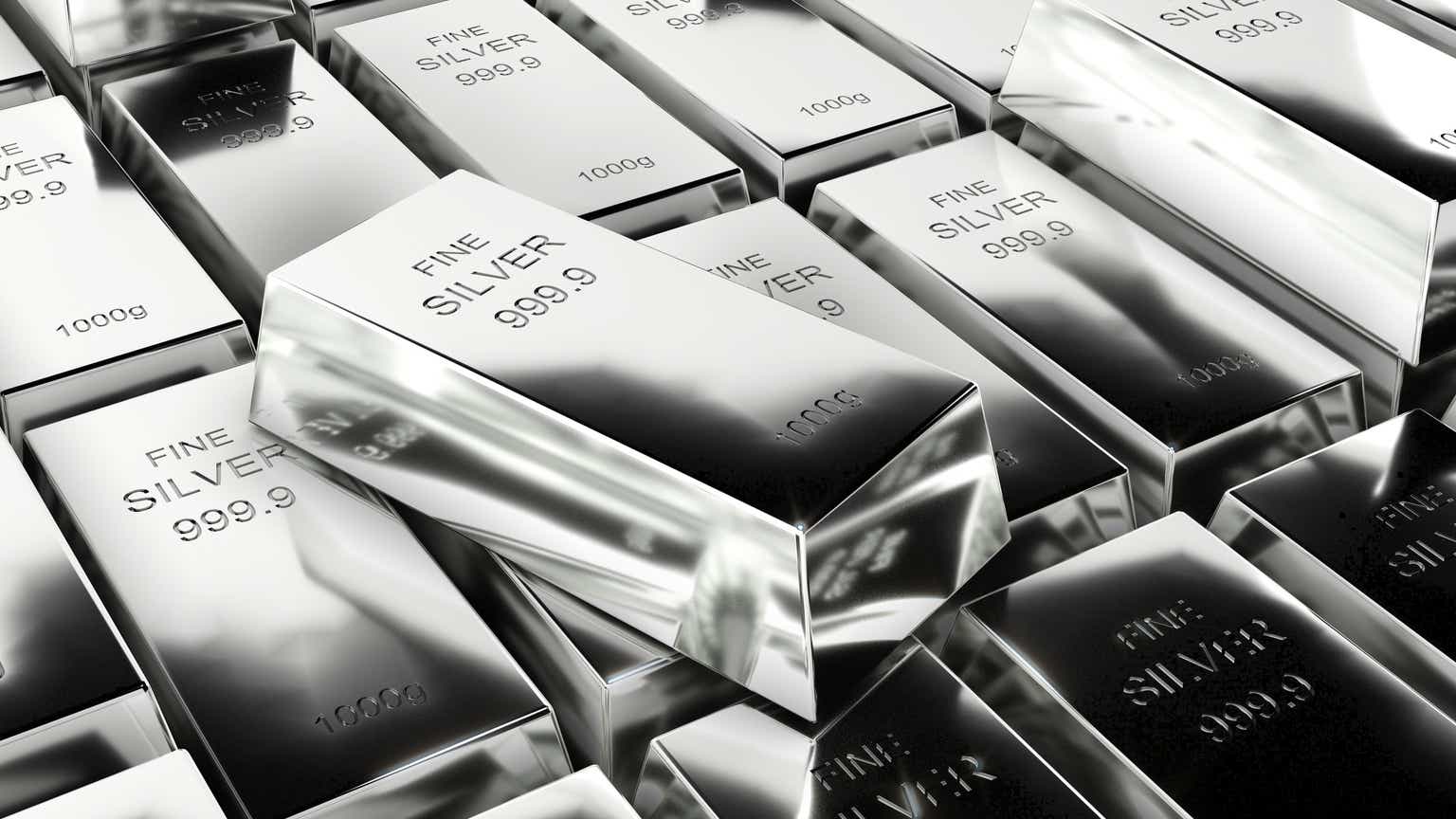Oselote
Introduction
Hecla Mining (NYSE:HL) is the largest silver miner in North America, producing 17M oz annually. About 60% of the revenue is silver and remaining is gold and base metal offsets. What makes them unique is where they mine. There are very few silver miners in North America (and currently zero in Australia). Yes, other miners mine silver, but they are not considered silver mining companies.
What I like about Hecla is the locations of their mines. Why is that important? Because most of the silver mines in the world are in emerging markets where political risk is much higher. When institutions want exposure to silver miners, Hecla is going to be the darling.
Hecla is not really an investor favorite and historically has not performed well. In fact, I’ve never been a fan of its management team. They have made bad decisions on acquisitions and have never cared much for a clean balance sheet. To be blunt, they have not been investor friendly.
However, even with my misgivings of their management style and execution, I still consider it a must-own stock, and it is one of my largest positions. Why the contradiction? Because they do well during bull markets. Even if you have a weak balance sheet, nobody cares during a bull market.
I constantly hear people complain about Hecla’s marginal performance. However, if silver runs from $30 to $50, this is exactly the stock you want to own. Why? Because it will participate. That is pretty much guaranteed, in my opinion. Investors will buy this stock, and especially institutions.
The question is, does it fit your strategy? Does it have enough leverage to get you excited? For some investors, the answer is no. They would prefer some microcaps that have much higher leverage. For me, it’s a perfect fit. I want to own as many quality producers as I can find at a good entry price. I doubt Hecla will be a 10-bagger, but it has the potential to be a 5-bagger. That’s good enough for me.
One thing I always like to point out is that investing in PM miners is speculating. We are gambling since so many things can go wrong. Keep your allocations low and expect to lose money on some of your PM mining stocks. What we are really betting on is PM prices going higher. If silver prices rise, then Hecla will be in a strong position. If silver prices languish, then bad things can happen.
|
Stock Name |
Symbol (US) |
Type |
Category |
Share Price (US) |
FD Shares |
FD Mkt Cap (7/1/2023) |
|
Hecla Mining |
HL |
Silver |
Major |
$5.30 |
612M |
$3.2B |
Company Overview
Hecla Mining is a silver and gold mining company (about 60/40). They are a low-cost silver producer, with cash costs around $3 per oz after offsets and a breakeven cost (free cash flow) around $16 per oz. They have a leveraged balance sheet with $552 million in debt and only $105 million in cash. Their recent results have been up (2020) and down (2018/2019), but they seem to have fixed their cost issues. They tend to do well during bull markets and struggle during bear markets.
They can currently generate significant FCF at $20 silver, which is something that many silver producers cannot claim. As long as they don’t add more debt and silver prices don’t crash, they should be okay. They have plenty of reserves and huge resources (13 million oz of gold and 600 million oz of silver), although I don’t think they will mine all of these resources.
This is a company with high leverage to higher silver prices. Plus, they have several large development projects. In the long term, they could easily double silver production. They have two large silver projects (Rock Creek and Montanore) in Montana (330 million oz) that are being permitted. If they can get one or both of these permitted, it will add significant production.
In 2021, they acquired Klondex Mines, which has significant potential in Nevada for increasing gold production. In 2022, they acquired Alexco Resources, which will add around 3M oz of silver production in 2023, and should add 5M oz over the next few years.
In 2023, they will produce about 17 million oz of silver and 175,000 oz of gold (used for offsets to lower their cash costs). As a speculation bet on higher silver prices, it looks pretty good. They do have a large market cap of $3.2 billion, but they could still appreciate quickly. This will perhaps prevent them from being a 5-bagger in the long term, but I wouldn’t rule that out with their resources and pipeline. The key will be how high silver prices reach.
Company Info
Cash: $105 million
Debt: $552 million
Current Silver Resources: 600 million oz.
Estimated Future Silver Resources: 400 million oz.
Current Silver Production: 17 million oz.
Estimated Future Silver Production: 20 million oz.
Current Silver All-in Costs (breakeven): $16 per oz.
Estimated Future Silver All-in Costs (breakeven): $20 per oz.
Current FCF Multiple: 27
Estimated Future FCF Multiple: 20
Scorecard (1 to 10)
Properties/Projects: 8
Costs/Grade/Economics: 7.5
People/Management: 7.5
Cash/Debt: 7
Location Risk: 8
Risk-Reward: 8
Upside Potential: 7.5
Production Growth Potential/Exploration: 7.5
Overall Rating: 7.5
Strengths/Positives
Good locations
Significant upside potential
Quality properties
Good management team
Good brand name
Risks/Red Flags
Weak balance sheet
Dependence on higher PM prices.
Speculation stock (high risk).
Estimated Future Valuation ($75 silver)
Silver production estimate for the long term: 20 million oz.
Silver All-In Costs (break-even): $20 per oz.
20M oz. x ($75 – $20) = $1.1 billion annual FCF (free cash flow).
$1.1 billion x 20 (FCF multiplier) = $22 billion
Current FD market cap: $3.2 million
Upside potential: 600%
Future Valuation Explained
This is an estimated return, and will only occur if all assumptions are correct. A more likely outcome will be something less than this amount, although it is not crazy talk to expect silver to exceed $75 or the FCF multiple to reach 20.
My All-In Costs are the expected costs that will generate FCF (free cash flow).
I used a future FCF multiplier of 20, which I consider to be an aggressive expectation. I’m using 20 because Hecla will be a very popular stock when silver breaks out.
I used a future PM price of $75 silver because I am a long-term investor who plans to wait for higher silver prices. I expect to see this level reached within 3-5 years. In fact, I use $100 silver for valuations on my website since that is my expected future price. I tone it down a bit to $75 on Seeking Alpha, which I think is more reasonable.
It is my opinion that gold drives the silver price and that macroeconomics drives the gold price. The only reason I expect to see $100 silver is because I expect to see at least $3,000 gold.
A $75 or $100 silver price may seem like pie-in-the-sky fantasy, but silver traded at $49 in 2011 when gold was at $1,935. If gold rises 50% from its current level, there is a good chance that silver will rise 150%. This is usually what happens as the GSR gets squeezed. Of course, this is an assumption.
Balance Sheet/Share Dilution
They currently have a weak balance sheet with $552 million in debt and only $105 million in cash. This limits their options if they want to build another project. They need to clean up their balance sheet.
They do have a significant number of FD shares, and I hope they don’t dilute too much more. In fact, I’m hoping they will begin buying back shares once they clean up their balance sheet.
Risk/Reward
As I mentioned at the beginning, investing in PM miners is speculating. Why? Because one of your assumptions is bound to get flipped. The biggest risk is that PM prices won’t rise, or inflation will cause costs to rise significantly, reducing expected margins. Many things can go wrong.
Hecla tends to perform poorly in bear markets, so if silver prices drop, so will Hecla’s share price.
The reward is enticing if silver prices rise. Hecla’s costs should not take off, which should leave them with expanded margins. Those margins should continue to expand as silver rises. Investors who don’t own Hecla when silver breaks out will wish they did. It’s not often when you see a stock rise more than 100% in a single year.
Investment Thesis
I use a pyramid approach to investing, with many safer bets at the base of my pyramid. This includes physical PMs at the base to reduce risk. I also want to own as many quality PM producers as I can find at good entry prices to diversify risk. These are the stocks in the middle of the pyramid.
Hecla is the type of stock that fits very well in the middle of the pyramid. It’s not highly speculative, but it does have high risk, as do all PM miners. But as a quality producer, it gives me a degree of diversification. It’s not a stock that is going to make me rich, but it gives me the foundation that allows me to invest in more speculative plays higher up in the pyramid.
Hecla should do one thing well, which is participate. What I mean is that if silver prices rise, Hecla should rise with it. Moreover, it should outperform the silver price. And if we get lucky, it will get overvalued (with a high FCF multiple) as investors choose Hecla for its safe locations.
Strategy to Manage Risk
I use a pyramid approach (as discussed in my book) to manage risk, along with low allocations (normally less than 1% per individual stock), whereby I use less risky assets at the base of the pyramid and riskier stocks as I move up the pyramid.
As the shape of a pyramid implies, the bulk of my portfolio is on the lower half. Also, the base of the pyramid should be strong enough to withstand major corrections when the more risky stocks higher up on the pyramid get obliterated (sometimes down 70% or more).
I don’t trade. Instead, I buy and hold. However, I have exit strategies for each stock. I often add to stocks that crash more than 50% if I still like the story, thereby reducing my cost basis. And I always buy big corrections to improve my portfolio (this is usually the best time to buy).
Credit: Source link








































